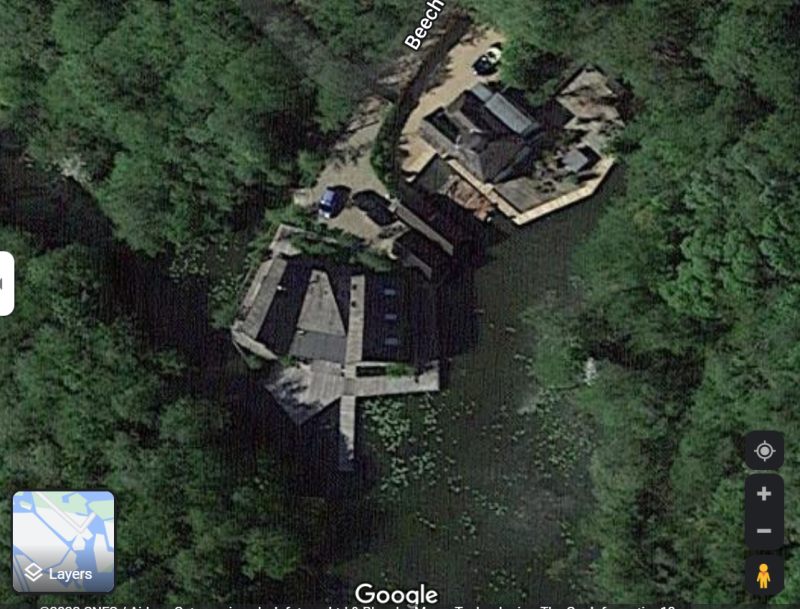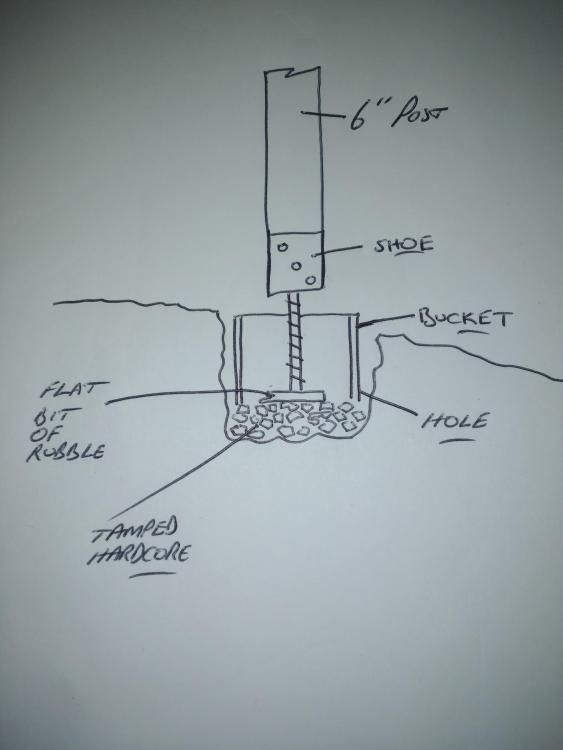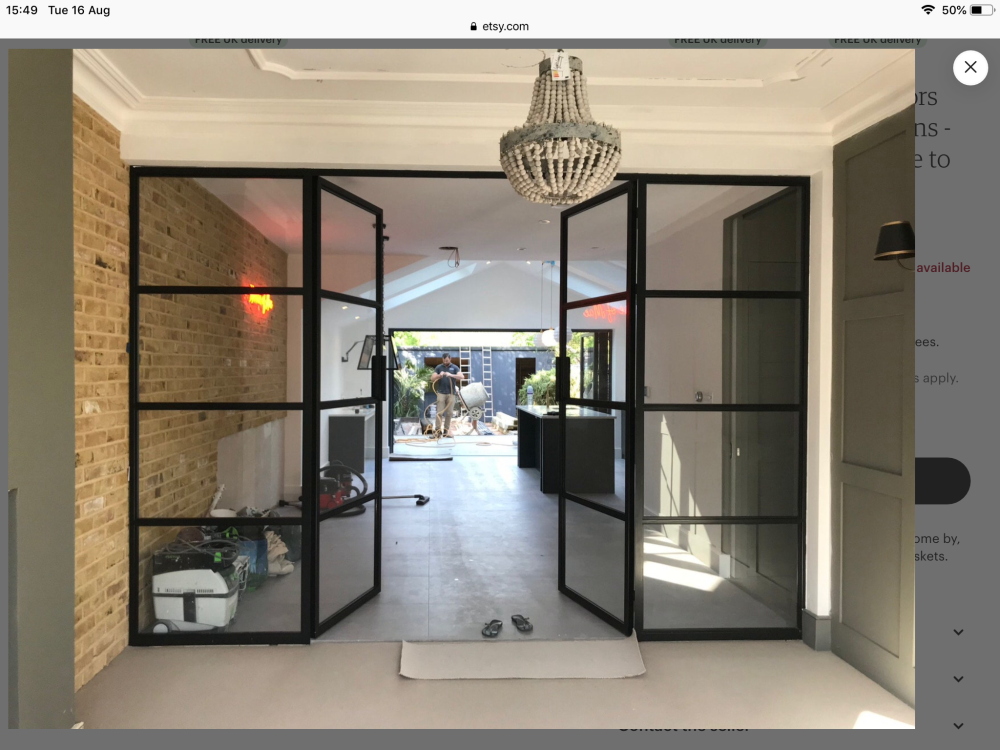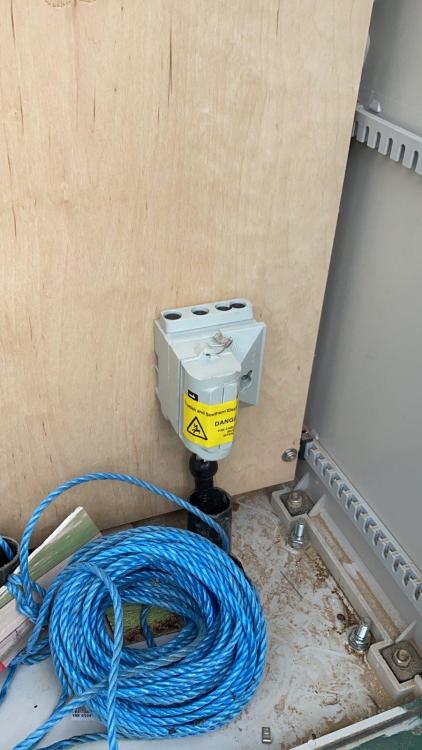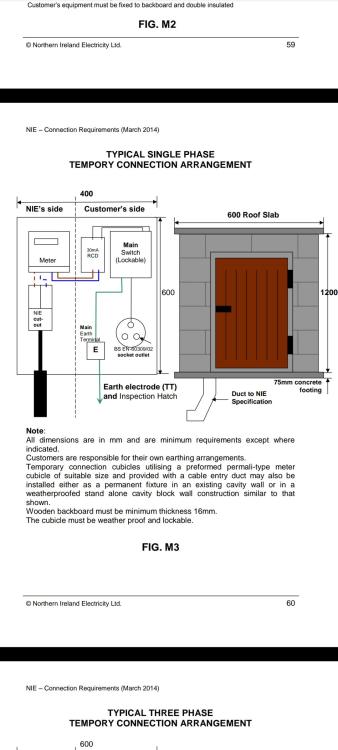Leaderboard
Popular Content
Showing content with the highest reputation on 08/16/22 in all areas
-
Personally, I'd part company with the architect and QS with immediate effect, and you can manage without either of them. Self-building is hard, and it's reassuring to have a professional to hold your hand. If they're leading you down the garden path however, they need a wake-up call. All credit to you for pushing back!5 points
-
Imagine what a £29 billion investment in renewables and insulation improvement could achieve in the medium to long term.4 points
-
I am just reading the suggestion that the energy price be capped at the current price. At a cost of £29bn! Whilst I totally recognise the need to help people, I think politicians are once again messing up. It seems to me that politicians across most of Europe are using taxpayer money/borrowing to subsidise rising energy prices. The problem with this is that producers see that demand never falls as the price rises so the price will just keep rising. Basically it is an economically dangerous policy that would could just see prices spiralling out of control.4 points
-
Ultimately, humanity is bad. Humanity is not sustainable.3 points
-
But less by some that make an effort and hopefully set an example.2 points
-
I agree, likewise I get annoyed seeing burning wood is bad, but heat pumps are the holy grail, probably from the same people who drive a stinking old diesel car. None of them are perfect, but done correctly they are no doubt an improvement on burning oil.2 points
-
This thread is quite an interesting conversation. I'd like to explore what we think "Eco house" means, in the context of the riverside house posted up by @CharlieKLP. There's a separate issue about woodburning being sustainable, which I'll do on a separate post if I pursue it. Basics first. The house posted up is called Backwater, and is fronting a 'lagoon' at Wroxham. Address: Backwater, Beech Road, NORWICH, NR12 8TP. Linky. I'm happy putting that there as it is off their own holiday rental website. The Planning App is here, but the buggers at the local council have taken the docs off the web, and it would take an FOI to get them. (Update: double bugger, the session expires.) This is the site before the development, from the records on Rightmove. It is the one with the boat. They bungalow-gobbled the site for £342k in 2012, which seems a fandabidozi buy. It is 142.1 sqm floor area. The EPC is here, and it is recorded as GFCH so I just don't believe the new one is off grid for gas or electric without direct evidence, based on likelihood (open to correction). It's architect calls it "in a largely off grid area". I hope to God it is the EPC for the old one, as it is an F - and I can find no published info for the new one (was an EPC required to be lodged in ~2015?). And this is afterwards. I'd punt on it now being about ~250 sqm due to partial 2 storey and the rather fatter footprint (which looks like a normal 'you can increase it by X%' rule). Eco-House? 1 - I think Eco House is the most wiffly-waffly term of all of them, which is why it gets used in windy virtue signalling. ISTM that it must mean something different from what it meant a decade ago, and now I think an Eco House should at least be carbon positive and able to demonstrate that in N years it will have recaptured all the emissions used in building it, and be significantly energy efficient to run in ongoing terms (if you like call that an EPC of >100). 2 - This house is 7-8 years old, so I would not expect it to meet that. In addition it has a honking great woodstove and apparently no self-owned local wood supply. I have no data on the heating / cooling systems, and the EPC value. 3 - The absence of solar PV suggests to me that it is not *that* sustainable in my terms above. 4 - Yes, it is beautiful, but imo that has nothing to do with whether it should be called an Eco House. And I think I would love to stay there, but at a couple of K a week I would take the full 8 people. 5 - I think two aspects of Eco House we have not addressed are: a) What about space usage - can a house that uses say double the average UK floor space per person be called Eco or Efficient? b) I question whether a second house for a family can *ever* be Eco or Sustainable on the basis that no one ever *really* needs more than one? Surely Eco is also a lifestyle rule of modesty and simplicity? What do you guys think? Ferdinand2 points
-
🤣 take a look at the MBC passive house twin wall system with pumped in cellulose. according to those that have them they're VERY quiet internally as the 300mm cellulose really dampens down the external noise. (other companies are available to do this sort of twin wall pumped cellulose build)2 points
-
It's OK. leave it. If people can't tell if it is concrete or stone then it can't be too bad. I agree with jet wash , repair, and distract, Your beautiful plants will get all the attention. I would also drill some drain holes through the mortar to let water out and reduce pressure that may lean the wall over. as is probably the cause in the last picture. Try through the mortar at the top of the perpend, perhaps every 2nd or 3rd block, and that should be quick and easy. Drill bit as big as the mortar will allow.2 points
-
I would suggest leaving your architect on good terms so they can be there down the line if you need to ask questions or get support. This is what we did with our architects and it was something they were happy with. they got us through planning and BC drawings and then let us get on with it. but they're at the end of a phone/email to discuss ideas or ask question etc and we have a really good relationship with them. I send them updated photos of the build and invite them to site to just look around without asking them questions so that they maintain an interest in how it's going. seems to be working for us really well. I would get rid of the QS though! once you have their figures on what things 'should' cost you can go out to tender on your own and will have an idea if the builders/subbies are trying it on or not. we used an online QS which gave me a ball park figure and was good enough for the bank to get a mortgage with. I then went to various groundworkers about building our basement and foundations. spoke to timber frame companies about building the timber frame. window companies for the windows. chose the best quotes/people I'd most like to work with (as that bit is very important if you're project managing!) and got on with it. that got the superstructure up and I then found subbies to do bits and pieces as we require them. I'm finding it quite stressful but also very enjoyable at the same time. yes, it's slower than using a main contractor but I'm learning loads, putting in the graft on site to save money and getting the satisfaction of actually self-building rather than calling it self-building and handing it over to someone to build a house. 🙂 with a job that requires a couple of days a month I would be all over self-building/project managing/getting involved. it's a great learning experience. but, I also agree with @Iceverge and, after spending months insulating and airtightness-ing it might've been worth while getting a TF company to do all of that. I'm sure we've saved a LOT of money (I'm thinking at least £10k and will calculate it once I'm done) but we'd be many many months further on in the build and a lot closer to moving in. I couldn't afford the basement AND the MBC passive twin-wall house so chose to have the basement and do a standard open-panel TF and insulating ourselves in the end. I love our basement space and once it's actually finished it will be amazing! but, I have a slight regret over having it and life would've been a lot easier and quicker to build if I'd gone the MBC passive route. but then where would my cinema, music room and gym have gone! 😂 I also agree with @Nickfromwales in that you should just crack on. find a groundworker to do your foundations as designed by the structural engineer and while that is happening you can find a builder to build the shell and a joiner to do the roof etc. once you get the ball rolling it's not as daunting as it first seems. it's taking the first step on a new and unknown journey that's the killer. JFDI!2 points
-
Yes, but that’s my point. Humanity does not try hard. Humans go for the cheapest and easiest option. Obviously, we are not human; we are buildhubbers. But we are the minority. Probably less than 1% build their own houses.1 point
-
We aren’t having a wood burning stove either. Other half not happy about it at first. However, there’s a long list of reasons not to have one including pollution1 point
-
Agreed. Though it can no doubt contribute. Im never suggested that there was a solution. Just getting fed up with stuff being decribed as "sustainable" when it patently isnt. Just accept the fact our existence uses resources and causes pollution.1 point
-
1 point
-
It is true. I know, you know, and everyone else knows, its just greenwashing. There nothing "sustainable" about the whole carry on. Not least because there no guarantee that the replacement tree wont just be removed early in its life.1 point
-
They're graveyard quiet when built, and the roof ( 400mm with MBC ) is even more so. PIR based frames tend to be quite acoustically transparent, brick and block so / so, cellulose wins hands down. Seriously unimpressed with PIR ( SIPS esque ) roof designs, way too noisy for my liking.1 point
-
Do you really want to have to heat a tank that size to over 60oC all summer just to get DHW? Any cooler would need a monster of a heat exchanger for decent DHW flow rates / temps?1 point
-
However most of us here are trying to make a difference.1 point
-
1 point
-
Or just get a really good builder who will know other trades you need locally, I only used an architect to put my pencil drawings on CAD (and he still got it wrong!) No QS, No SE, i was PM to keep an eye on detail. 👍1 point
-
1 point
-
Bollocks to all this pampering . Your architect designs it . You build it . Lots of f ups on the way and lots of learning . Only girls need “ ground works men “ , “quality surveyors “ , “ IT supervisor “ , “ bum wiper “ etc etc . Real men do it the real way ! 😁👍1 point
-
Not airtight but draught free (sorry for being picky) as @markc says above 👍1 point
-
Sorry folks, I really must read a thread before commenting, I saw this and thought it was a poured concrete retaining wall, looking back I now see it’s a block wall and giving way in a number of places. Forget paint or slips, as others have said, good clean and tidy up or you are looking at pulling it out and replacing altogether1 point
-
You're inviting a world of misery on yourself by making the wall more noticeable. As it's beside the drive any clean finish will get filthy immediately and then demand constant upkeep. Before you get tempted try to paint a bit of board white and stand it beside the drive for a few wet days. It'll soon put you off. As said above straighten out the coping stones with a string and a bucket of morter. Give the drive a good brush. Most of our impression of tidiness comes from a neat "floor"! Consider a line of flowers/shrubs on top if you want a bit of colour.1 point
-
Unlikely. You really need specialist paint for a concrete retaining wall. I used Durbocem on an old concrete block retaining wall in the garden last year and it still looks as good as when it was first painted. There are other manufacturers that have good reviews. https://andrewscoatings.co.uk/shop/interior-exterior-walls/damp-mould/durbocem/ https://www.brewers.co.uk/product/BN6065E1 point
-
No way you will get a one liner. SAP/EPC are the same, they are a legal requirement for new and being sold houses. Full of flaws, but all reports have the same flaws, so are comparative. PHPP, is a passivhaus design tool and takes a more robust approach to heat loss and gain. DIY heat loss calculation, usually misses the difficult areas of solar gain, which can be difficult to model as there are many variables. Main things you need to know are the highest heat loss, coldest day and least solar gain, then you can size your heating system. For this you need whole house heat loss and room by room heat loss. Then you need to know the heat loss on say a 10-12 degree day to get a heating curve, from this you can look at modulation rates of the heat source and define requirements for buffers etc.1 point
-
We went for herringbone laminate laid on wood fibre underlay sheets. Love it. Was half the price of engineered wood and we don't have to worry about damaging or water stains. It's a very large (70m2) continuous area with only a couple breaks it in. We've not had the heating on but have had the cooling on (12c) and it's been exposed to a lot of direct sun and temperature changes. Not the slightest hint of movement or buckling. So glad we didn't go for engineered wood. Most people warned us away from wood, and seems they were right. You're instincts about them not wanting to lay the herringbone is right... our joiners said no, and we had several people say no as it can be a pain and you need to know the knack and tricks. Our guy was brilliant and worth the money.1 point
-
What ever the (expletive deleted) that means. Could claim that my shed is eco as it is timber, insulated and has south facing windows.1 point
-
UFH temp is low so engineered wood is no problem at all (temperature used to cure the glue during manufacture will be way above floor temp)1 point
-
I would glue only, screws are leak and leach points. solvent based contact adhesive .. Screwfix no nonsense is exactly to same as bostik1 point
-
I would just go for a cheap grab adhesive. I used some Wickes stuff a couple of months ago for some skirting and it worked fine.1 point
-
We are having oak engineered boards in two of the rooms downstairs. The supplier is doing the fitting and they’re fine with UFH. I asked about parquet and that was no problem for them either.1 point
-
Not herringbone but I laid my lounge floor in engineered oak over UFH and it looks brilliant and no problems at all.1 point
-
1 point
-
I wouldn’t rely on the warrantee to make your decision Like many product warrantees They are not worth the paper they are printed on UFH temperatures tend to be pretty low and tend not to effect floor covering Over the years I’ve seen many issues with a multitude of floor coverings But nothing relating to UFH1 point
-
They don't want to take the risk should you decide you need 80'C flow temperature and as a result wooden floor buckles. Do you know what floor temperature do you need, whether wood is appropriate at all? How thick is the engineered wood you're eyeing at? If you're after wood look then vinyl is vinyl and will never look like it. It's more like tiles, so if I had to go LVT route, I'd pick some colorful mosaic type.1 point
-
When we were looking for the position of a blockage in an underground storm water pipe I made a gadget that created a really big 1mHz magnetic field and a tuned receiver with an LED crossbar display. It could pinpoint the end of the drain rod we taped it to to within about 75mm when the vertical separation was around 0.75m. The error through a wall at half that depth would surely be small enough for this kind of thing. I must dig it out and test it properly. I did originally try it out through walls inside the house including one that had a steel radiator on one side. Against my intuition it still worked in this situation although I didn't pay attention to accuracy.1 point
-
Brick slips won't work as they are put on a flat surface with a thin bed of adhesive. Also, that's a retaining wall, so there is always the risk of water coming through and pushing off any render or adhesives. I'd get the pressure washer out and give it a good clean. Some other suggestions, new coping stones would be easy, consider a contrasting colour to distract from the blocks. Or, you could use strategic planting (climbers or overhanging plants) to camouflage the wall. Lastly, you could fix timber to it and paint.1 point
-
+1 get the spec from your DNO. You can sometimes deviate a little as the guys doing the connection are not jobsworths. Our DNO spec called for a concrete base but we did wall mounted as the ground had a fair amount to make up and we need to route further cables in future. The days of mounting a meter box on a couple of 2 x 2s are over.1 point
-
I used a “in wall” meter box on a couple of posts near where it was going to go in the garage wall, when the DNO brought the cable to it I asked for a bit of slack (bribed them with tea and biscuits) and when the garage wall went up I swung it into the wall. Temporary supply to the caravan and sockets for the builders and heavy duty cable into the house ready for later, no additional costs 👍1 point
-
1 point
-
1 point
-
I know this is an old thread but here is my take: + cultivate a thick skin - it's not actually about you ... it is all about helping people to design better houses that they like. + all clients are different. LISTEN to them and try to understand their stated goals and their unstated goals. Get a sense of what styles of design they like and what they don't. + self builders by definition are confident enough to build their own houses. Some of them might be great designers too, some of them might not. Be open minded. They might have great ideas that you have never come across. + get a list of trusted professionals in other fields engineers, builders, ground works, CAD people, lawyers etc etc etc. Agree on mutual referrals. + (once you've decided you can't help particular clients) - send 'trace my plan' only enquirers to the cheap trusted CAD guy. + if you hate your new clients or their sense of design, refer them to other architects who might be more suitable. You can screen for this somewhat in the initial telephone call. + if you only want to work with like minded design professionals rather than private clients, you probably need a job in a big architectural practice, working on commercial rather than self build. + treat any info your clients bring you (including their sketch plans) as input to the design process. + for the 'trace my plan' clients, identify 3 or 4 things (for free) that will help improve their design. Explain these things and see whether the clients like your ideas (and therefore want to engage you). If not, refer them to other people (but ask yourself, if you're such a great architect, why you can't come up with a few ideas that these clients like). You will establish your worth when e.g. (a) you suggest something they love and that they have not thought of before or (b) you save them a bunch of money or planning hassle or get a project approved by the planners that has previously been rejected. + treat you work as a collaboration with your clients. You are not the final arbiter of design, they are. They achieve this right by choosing to employ you and accepting your ideas or rejecting them. + realise you provide a collection of services of which design is only one part. e.g. familiarity with the planning and planners in your part of the country / access to other good professionals / steering through the planning process / project management / liaison with builders etc etc etc. Recognise that any project may need a particular subset of those skills - including, for instance, no design input at all. Imagine you were a GP instead of an architect. The analogous problem is that many of your patients can't or won't take your advice to sort out their lifestyles and therefore improve their heath. You know how to maintain a healthy body, but they have their own ideas and they don't seem to listen. You find that deeply frustrates you. You have two options - (a) either roll with it and try to find mechanisms to help them anyway or (b) find a job where you only deal with fit clients (sports medicine maybe). And, I hope you don't mind me saying this - lighten up - it's only a job after all. Do solicitors stress about whether clients 'truly value their legal input'? Or do they just do their work to the best of their ability. Alan1 point
-
Building regs are joined on a joist or supported by a noggin1 point
-
All the various predictions at the moment are entirely based by taking the current wholesale price of gas and electricity and extrapolating it forwards. Whilst this is fine in the short term, it has little predictive power in the longer term. The price of gas has doubled since early June, hence the massive recent increase in predictions for the next energy cap and the one in January which would see the full effect of recent increases. Predictions from just three or four months ago were wildly wrong. Forecasts of a similar price next winter are worthless, considering the price of gas has doubled in two months it could as easily double again or fall by 50%. I am getting somewhat annoyed that politicians are not being honest about what is going on. This is almost 100% due to the war in Ukraine and sanctions against Russia. Russia has retaliated by massively reducing the gas supply. Astonishingly the price of gas has gone up so much that Europe is giving more money to Russia than ever. Indeed the correct way to hurt the producer of a commodity is to increase supply and reduce use so that the price of the commodity falls. We have managed to achieve the opposite effect. We are basically having an economic war with Russia. There were some articles in the papers about it last week. The Russians think that we will give up before they run out of the ability to fight Ukraine. I think people are hardier than they realise, but telling them honestly what is happening would help a lot. I find it quite bizarre that the Daily Mail etc blame this on renewables which actually are helping the situation. That electricity from the new Hinkley station will also be looking a lot better value than originally. Gas is a more regional commodity than oil and because so much of it is used for domestic heating in Europe, it also has less elastic demand. Thus the producers are in a much more powerful position than they are with oil, where substitution and buying it from elsewhere are easier. Basically it is a lot easier not to drive than it is not to turn on your heating and gas boilers don't have any alternative in the short run. Anyway we have got ourselves in a very difficult situation I am in the fortunate position that I have an efficient house and I can afford the increases. Some people are going to be wiped out by this. It is not easy for the government to do anything about it. They would basically have to borrow money to pay people's energy bills. With almost 28m UK households, it would cost over £30bn a year to stop bills going up more. They were supposed to be looking at the pricing of electricity as fixed cost producers are coining in at the moment. I guess the windfall tax is an easy way to capture this. The price of gas, however, is simply driven by the rising price of gas. The long term solution is more renewables and more insulation. The short term solution is the end of the war, something that I wouldn't begin to try and predict.1 point
-
1 point
-
You want a standard form of contract, if you're using an architect or a qs as a contract administrator then they would help you chose the appropriate contract, and if you're just going direct to contractor there are other standard contracts available. No one should be writing their own contract or entering verbal contracts in this day and age, I would say that a detailed set of contract information and a formal contract are even more important if you're operating in England1 point
-
For any significant work especially a big extension or a new home I would never consider not having a written contract, or something in writing.1 point




